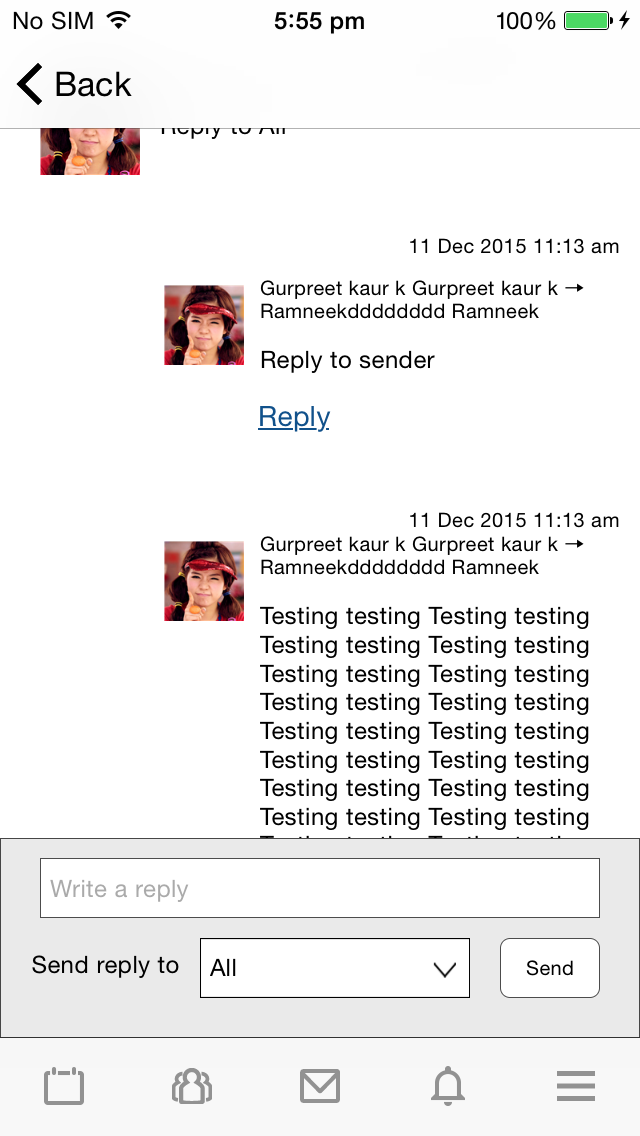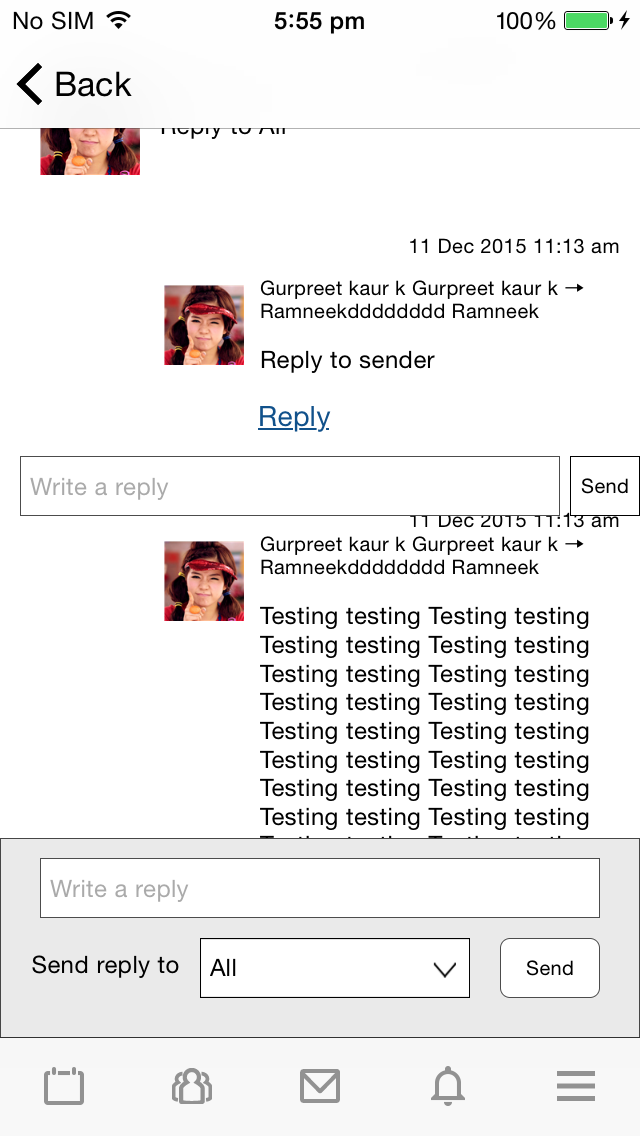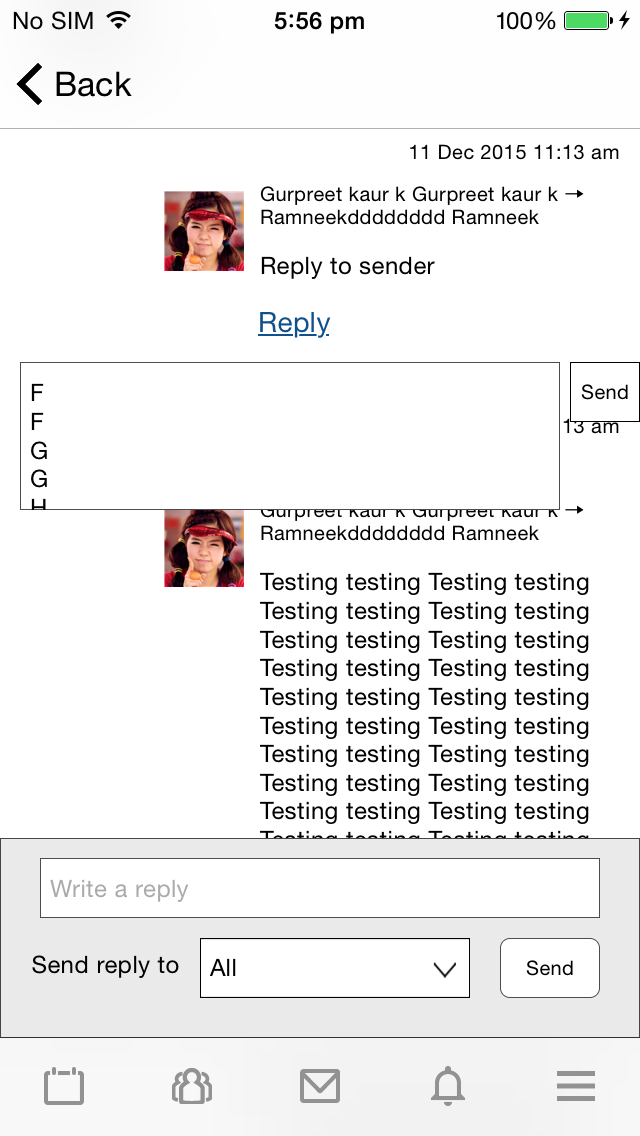I have different examples where we can update the UITableViewCell height based on growing UITextView which actually is working for me. The issue which I am facing is, I have more subviews below UITextView inside a UITableViewCell. This way, the cell's height updates but the position of the subviews remain fixed which causes overlap of UITextView and the subviews.
Just to mention, I am not using auto layout.
How do I fix this ?
These are the three screenshots which will help in understanding my issue :
1. Before TextView is shown :
2. After TextView is shown :
3. After text is entered :



